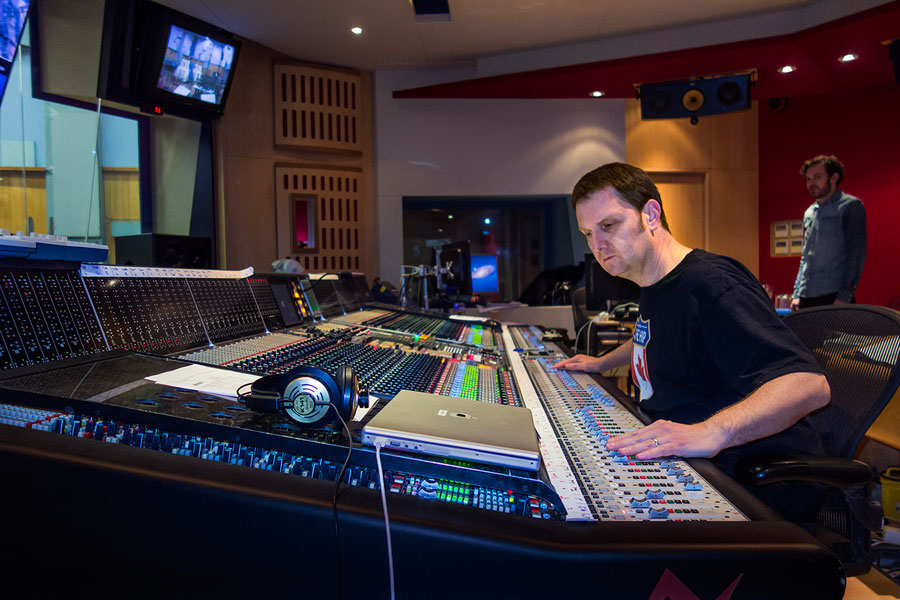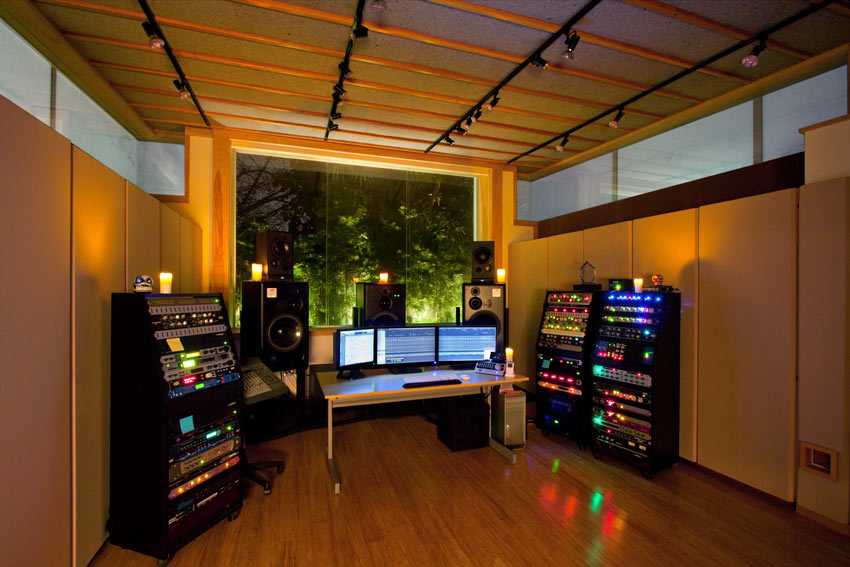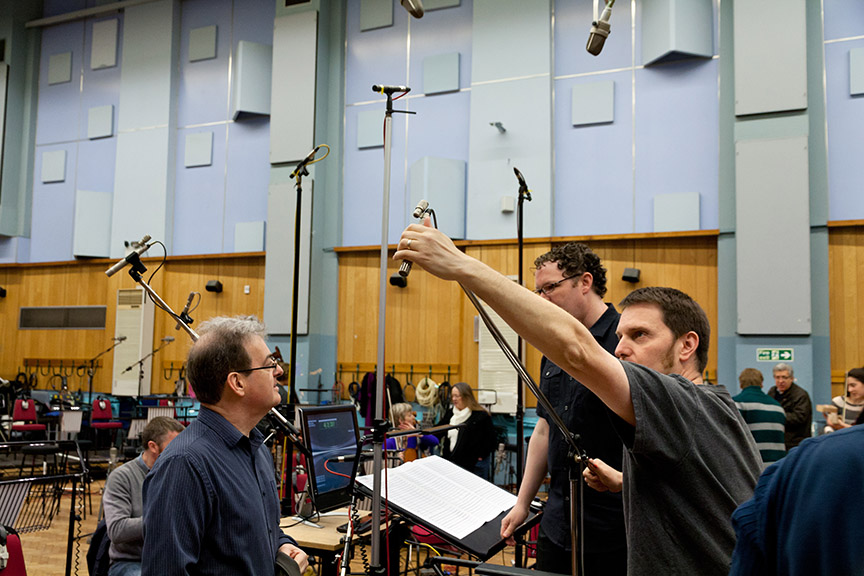This month we spoke to John Rodd about his background and recording set up, as well as the process that goes behind his work as a recording, mixing and mastering engineer. John has worked on many top video games including EA Star Wars: Battlefront, Call of Duty: Black Ops II, Mass Effect 3, Assassin’s Creed Revelations, Assassin’s Creed II, and works extensively with Blizzard Entertainment on the World of Warcraft series.
RS: For those that don’t know, what is your background and what are some recent projects you’ve worked on?

JR: I record, mix, and master music for film scores, television, video games, film trailers, commercials and albums, working in about every music genre there is.
My role is to shape the music to match the composer’s vision, and what I bring to the table is a wide background in different styles of music, which helps a lot these days, as unusual music styles, traditional instruments and synths seem to meet more and more. For example, I recently finished a wonderful project in a cinematic orchestral-electronica style for Penka Kouneva called The Woman Astronaut.
In addition to work on many AAA games including EA Star Wars: Battlefront, Overwatch, World of Warcraft (Legion / Warlords of Draenor / Mists of Pandaria, Cataclysm) Star Wars: The Old Republic, Call of Duty: Black Ops II, Star Wars 1313, Starcraft II: Heart of the Swarm, Star Wars: Kinect, Mass Effect 3, Assassins Creed (Revelations / Brotherhood / II) and others, I have worked on over 150 big Hollywood film scores, plus various TV shows including Breaking Bad.
I started in the music recording, mixing and mastering industry at Manta Sound in Canada, where we did everything from big live orchestral film scores to rock to advertising jingles. After time spent freelancing as an engineer in England and Canada I moved on to Ocean Way (now EastWest) in Los Angeles doing rock, jazz and scoring projects, and then spent seven years as a scoring recordist at the Newman Scoring Stage at 20th Century Fox. My eleven years of freelance since Fox has had me traveling all over the world to work.
RS: How did you get into music recording/mixing/mastering and what drew you to work on video games?
JR: I was profoundly fortunate to get the job at Manta Sound about thirty years ago, as it was one of the very best music studios in the world at that time. My education and work prior to Manta had been more on the artistic side of technology, but I just knew that music studios were where I was meant to be. It was a multi-room studio with a big room for orchestral film scoring. I loved the sound of that room, and the complexity and excitement of having all those musicians and engineers all working toward the same goal.
Video games are a story in themselves. I spent a lot of time and quarters playing Asteroids when I was 14. We are now a million miles from that! Today, the music budgets for video games sometimes exceed those of films, and they are sometimes hiring full orchestras with top orchestras. I love being a part of it.
RS: Could you describe your recording set up?
JR: It is difficult to generalize here, as I go to many different recording studios for larger ensembles, and each score will have a different recording setup.
For any music recording project, it all begins with a discussion with the composer. I always want to know about the style of music, the musician ensemble, and what recording studios may fit into our budget and schedule.
I also need to know about the sonic landscape of dialog and SFX. When I flew to Abbey Road to record the orchestral part of the score for the film Elysium, for example, I knew that the score would have to fit in a world with huge sounding rockets, explosions, and dialog. I decided to place both my main orchestral microphones—the Decca Tree and the Wides (also known as outriggers)—and also my sectional spot mics slightly lower than I would place them on a romantic score. This gave me more control when I was mixing later at my studio, as I could dial in a slightly more present, articulate sound to coexist with the aggressive SFX and dialog.

RS: When you work on a game like Star Wars how much does the legacy of the franchise inform your mixing choices? Themusic is obviously very inspired by the John Williams scores, did you consider that in your mix?
JR: The sound of the Star Wars film scores most certainly was a key reference point for me. When composer Gordy Haab and I began working together on EA Star Wars: Battlefront, we sat down together and listened to a few key cues from the John Williams’ scores. They sound somewhat different across all of the films, so we made conscious decisions about the best sonic approaches for us to use. Having worked on quite a few Star Wars projects now, I would say it is less about trying to 100% copy all of what came before and more trying to embody the sonic spirit needed to live within that awesome world.
RS: What is your standard video game workflow? How do you receive and deliver files? How involved are composers in your workflow?
JR: When the schedule and budget allows, I will go and record the ensemble anywhere in the world. Sometimes, however, there isn’t an ensemble to be recorded. Mass Effect 3, for example, was all about Sam Hulick’s awesome synths-as-synths score, so there was no orchestra to record.
Many of my projects hire Dave Lawrence, music editor extraordinaire, to do the ProTools prep and music editing.
Once all the composers pre-recorded audio tracks have been bounced out of composer’s rigs, all the music has been recorded, and once everything is in ProTools sessions (one cue per PT session), then I’ll begin the mixing and mastering. I usually mix and master at my studio, Clearstory Sound, in Los Angeles, but not exclusively. I generally receive audio via WeTransfer.com or a hard drive, which means that the composer can be anywhere in the world.
With that said, composers sometimes sit with me while I am revising mixes for them, or sometimes they are at their own studio, busily finishing composing the rest of the project!
I’m 100% happy to keep revising the mixes ‘till the composer is 100% happy. Luckily I have the skill and the tools to ensure this doesn’t take long.
RS: Do you find there’s any big differences working on video games from the other projects you work on?
JR: When I’m working on a film score, I reference the dialog and SFX very carefully to make sure that I am coexisting well with them. However, in games, the majority of the score isn’t locked to picture, so my focus can shift away from specific lines of dialog and specific SFX.
RS: Do you have any advice for mixing, recording and producing for composers and sound designers? Are there any common mistakes you often hear?

JR:I have lots of advice [laughs], and I even offer free lectures to emerging composers a few times a year at my studio.
I think one of the most common mistakes, which for lack of a better description is “slammed.” I use multiple analog hardware compressors, plus many mixing and mastering techniques to get this uber-loud, modern sound, when a client requests it. Less experienced people will often try to achieve the same thing by just slamming their mix thru a plugin limiter, but this ends with a lot of distortion that has far less drama and impact than what is possible.
Another common mistake that I see is the baking-in of reverb to instrumental audio tracks. No doubt, everyone loves reverb, but it is a mistake to put it permanently into the raw unmixed audio, as it can turn into a disappointment for a music mixer such as myself. I know that many sample libraries have ambience as a part of the sound, but I tell composers to please turn off any additional reverb that they may be adding. The reason is that as I develop my mix and pan the virtual instruments around the mix, any additional reverb sounds strange. I have their backs on this, as I am ready to jump in there with multiple awesome sounding hardware reverbs I have in my studio, including three Bricasti M7s and four tc electronic System 6000s. These boxes sound much better to me than any reverb plugin that I have ever met, and I can apply them, with varying amounts of varying reverb sounds, to various tracks once the panning has been done.
